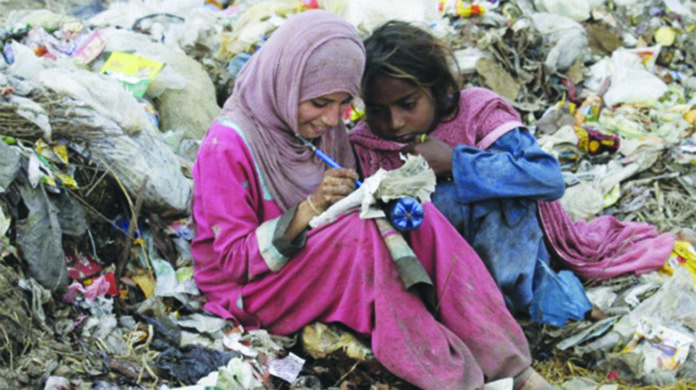In the complex mosaic of Pakistan’s developmental journey, the question of population control emerges as a central thread, weaving its way through the fabric of socioeconomic and political discourse. As the nation grapples with the dual challenges of rapid population growth and alignment with the Sustainable Development Goals (SDGs), the contours of government interventions reveal a paradoxical landscape fraught with contradictions and complexities.
At the heart of this puzzle lies the Benazir Income Support Programme (BISP), a cornerstone of Pakistan’s social welfare infrastructure initiated in 2008. Conceived as a lifeline for the country’s most vulnerable, BISP was envisioned as a safety net to mitigate the harsh realities of poverty and deprivation.
However, the programme underwent a transformative evolution in 2020 with the introduction of the Nashonuma Programme, signalling a departure from its original mandate. Embedded within the foundation of BISP’s legacy is a tale of adaptation and innovation.
Originally conceived to provide financial assistance to impoverished families, the programme underwent a metamorphosis with the inception of the Nashonuma Programme. This extension, introduced in 2020, marked a significant shift in focus towards addressing maternal and child health disparities. While the expansion of BISP reflects a commendable effort to adapt to evolving social needs, the unintended consequences of the Nashonuma Programme underscore the complexities of population control in Pakistan’s development narrative.
The Nashonuma Programme, with its promise of cash incentives for pregnant and lactating women (PLW) and their children under two, seeks to incentivize maternal and child health-seeking behaviour. Offering financial support amounting to Rs 2000 per quarter per PLW and boy child, and Rs 2500 per quarter per girl child of BISP beneficiary families, the programme aims to combat the pervasive issue of stunting.
Yet, beneath the veneer of benevolence lies a fundamental contradiction that threatens to undermine Pakistan’s progress towards sustainable development. As the Nashonuma Programme proliferates across the country, its unintended consequences cast a shadow over the overarching goal of population control. The expansion of the program to 158 districts, boasting a network of 512 Nashonuma Centres, signals a concerted effort to address the immediate health needs of vulnerable populations. However, amidst the backdrop of Pakistan’s skyrocketing population growth, questions arise regarding the efficacy and sustainability of such interventions.
It is imperative to emphasize that providing basic health facilities at the doorstep could obviate the need for programmes such as the Nashonuma Programme, which consume significant human resources and inadvertently contribute to the population dilemma by incentivizing larger families. By implementing these recommendations, Pakistan can chart a course towards sustainable population management and pave the way for a brighter future.
The cash incentives offered through the Nashonuma Programme, while intended to alleviate poverty and improve health outcomes, may inadvertently incentivize larger family sizes. In a country where economic and social vulnerabilities abound, the lure of financial support may incentivize individuals to maximize their benefits by expanding their families, exacerbating the population challenge.
Moreover, the Nashonuma Programme’s narrow focus on maternal and child health overlooks the broader determinants of population dynamics, including socio-cultural norms, access to education, and family planning services. While initiatives such as the Population Control Department signal a recognition of the urgency to address population growth, the coexistence of contradictory programmes underscores a systemic inconsistency that threatens to derail progress. To navigate this complex terrain, policymakers must adopt a holistic approach to population management that integrates evidence-based interventions across sectors. This entails prioritizing investments in education, healthcare, and socio-economic empowerment to empower individuals and communities to make informed choices about family planning.
Policy Alignment: Ensure coherence and consistency in policy formulation and implementation, aligning interventions with the overarching goal of sustainable development and population control.
Community Engagement: Foster community engagement and participation in decision-making processes, empowering individuals to take ownership of their reproductive health choices.
Comprehensive Education: Prioritize investments in comprehensive sexuality education and reproductive health services to equip individuals with the knowledge and resources to make informed decisions about family planning.
Accessible Healthcare: Improve access to affordable and quality healthcare services, including family planning services and contraceptives, particularly in underserved rural areas.
Socio-economic Empowerment: Promote socio-economic empowerment initiatives, including women’s education and economic opportunities, to address underlying factors driving population growth.
It is imperative to emphasize that providing basic health facilities at the doorstep could obviate the need for programmes such as the Nashonuma Programme, which consume significant human resources and inadvertently contribute to the population dilemma by incentivizing larger families. By implementing these recommendations, Pakistan can chart a course towards sustainable population management and pave the way for a brighter future.






















